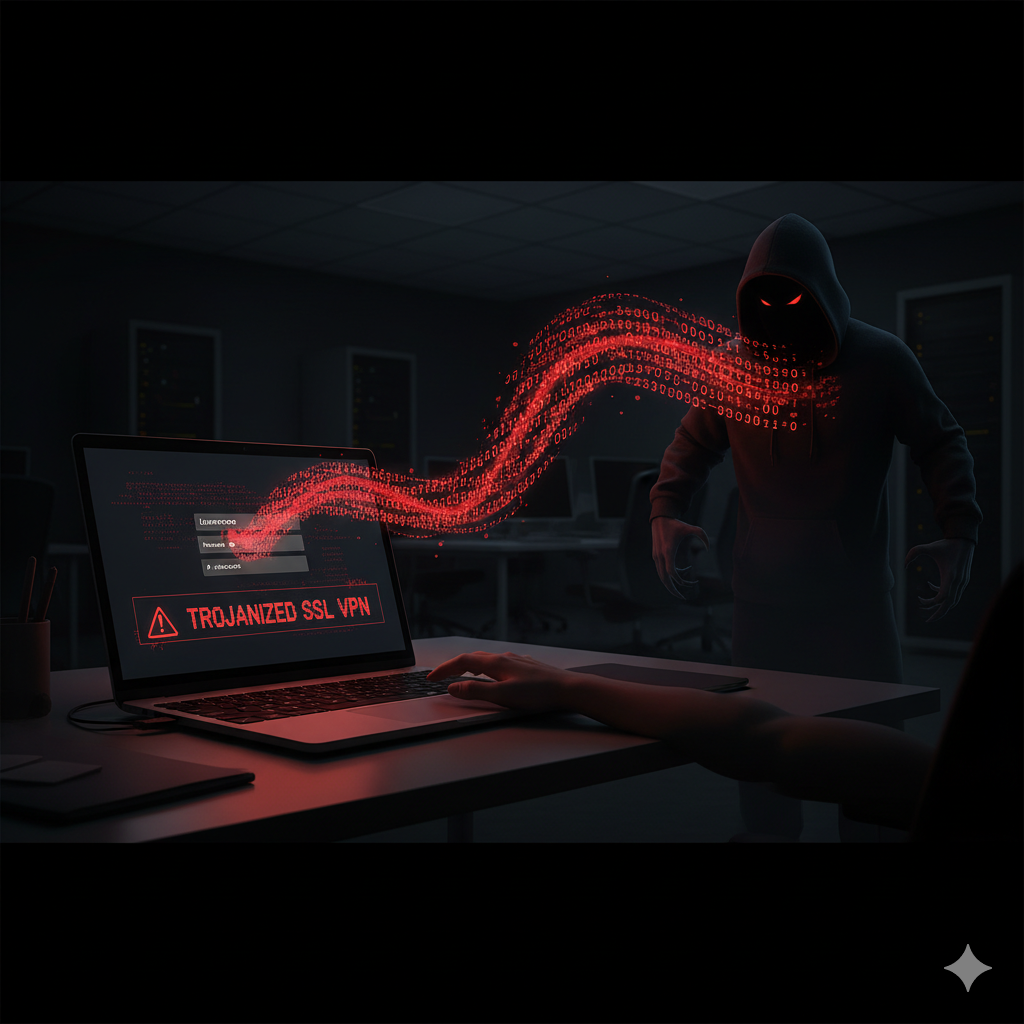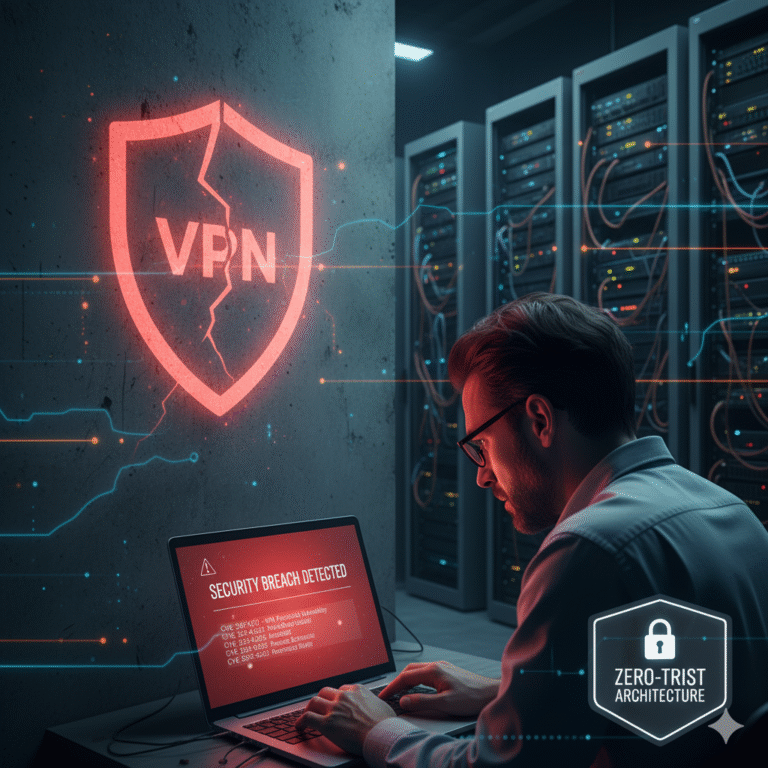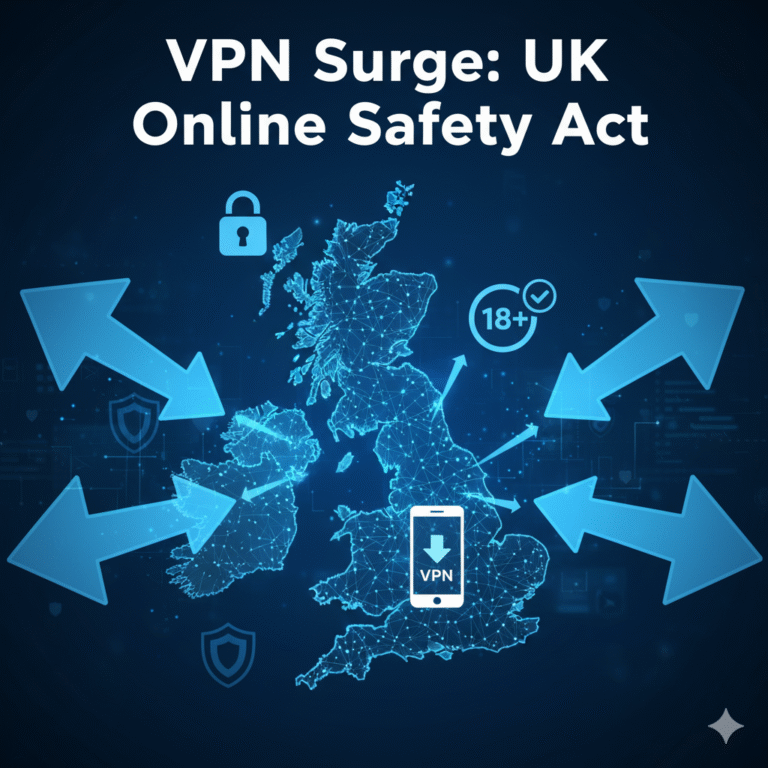In June 2025, SonicWall and multiple security vendors warned of a trojanized version of the NetExtender SSL VPN client that was being distributed via spoofed download sites. The modified installer — almost identical to the legitimate client — was designed to harvest VPN configurations, credentials and authentication tokens, creating a direct route for attackers to bypass corporate remote access controls(SSL VPN app). This incident highlights a sobering truth: enterprise VPN software itself is an attractive target for threat actors, and supply-chain or installer-level compromises can defeat even well-configured defenses.
What happened: a trojanized NetExtender installer
Researchers at SonicWall and Microsoft’s threat intelligence team identified attackers distributing a modified NetExtender SSL VPN application that mimicked NetExtender v10.3.2.27. The malicious build included small changes to two executable files that added credential-harvesting and exfiltration behavior. Victims who downloaded the binary from lookalike websites — not from official SonicWall channels — risked having their VPN credentials captured and sent to attacker infrastructure.
Microsoft tracked variants under names such as SilentRoute, while specialist responders labelled the campaign a credential-harvesting operation used to facilitate follow-on intrusions. eSentire, Huntress and other incident-response teams reported similar sightings, noting the installer was nearly indistinguishable from the real client and thus effective at luring legitimate users.
Why this attack is especially dangerous for corporations
Trusted software vector — Employees and contractors expect to download VPN clients to connect to corporate resources. A trojanized installer exploits that trust and often bypasses endpoint protections that whitelist known vendor binaries.
Credential theft enables lateral movement — Once attackers harvest VPN credentials (and, crucially, any OTP seeds or persistent tokens), they can access internal systems, deploy ransomware, or exfiltrate sensitive data — even if MFA was enabled but the seed or session tokens were compromised. Recent campaigns abusing stolen credentials have led directly to ransomware and data-leak incidents.
Supply-chain resemblance complicates detection — The attackers modified only a few binaries, keeping functionality intact so the client worked normally while running hidden exfiltration routines. This stealth reduces immediate suspicion and increases the window for attacker activity.
How defenders detected and responded
SonicWall, Microsoft and industry partners issued advisories after automated telemetry and manual analysis flagged the modified installers. Microsoft revoked malicious digital certificates and collaborated to take down spoof sites; SonicWall urged customers to download only from sonicwall.com or mysonicwall.com. Endpoint detection systems and managed detection and response (MDR) vendors such as eSentire and eSentire’s TRU flagged the trojanized files (GAV: Fake-NetExtender / SilentRoute) and provided indicators of compromise (IOCs) to customers.
Industry guidance focused on:
Requiring downloads only from vendor portals.
Validating installer checksums/digital signatures before execution.
Forcing password resets and token rotations after suspected exposure.
Scanning endpoints for persistence and exfiltration artefacts.
Practical mitigation steps for organisations (immediate + long term)
Immediate actions:
Block downloads from non-official domains via web proxy and DNS filtering; remove or quarantine any NetExtender installers obtained from third-party sites.
Rotate VPN credentials and revoke sessions for accounts that installed the suspicious client; regenerate OTP seeds where plausible.
Run endpoint scans (EDR/MDR) for the identified hashes and behaviors and investigate any suspicious processes or outbound connections.
Longer-term hardening:
Enforce signed installer validation: require digital signature checks and block unsigned installers via application control policies.
Use allow-lists or managed software distribution so clients are installed only through enterprise channels (Intune, SCCM, Jamf).
Employ multi-signal detection: correlate VPN logs, unusual successful logins, device telemetry and threat intel to spot credential misuse quickly.
Limit VPN scope: use zero-trust network access (ZTNA) or least-privilege access to reduce blast radius if a VPN account is compromised.
Broader context: VPNs as an attack surface
This event is part of a broader trend where remote-access tools and VPN endpoints are prime targets. Researchers disclosed related SSL VPN vulnerabilities in 2024 and 2025 (for example CVE-2024-53704 and other SSL VPN flaws), and attackers have combined zero-days, stolen credentials and trojanized clients in multi-stage intrusions. The result: even patched VPN appliances can be compromised via stolen credentials or compromised clients. Security teams must therefore treat VPNs as full security domains, not simple infrastructure.
Learn more than VPN market projected to hit US $151 billion by 2029
Conclusion — assume compromise, reduce impact
The trojanized NetExtender episode offers a clear lesson: trusting the installer is not enough. Organisations must treat endpoint installers as high-risk assets, enforce strict software provenance checks, and adopt defense-in-depth strategies that limit what a single stolen credential can achieve. Rapid detection, credential rotation, and adoption of least-privilege remote access (ZTNA) will reduce the likelihood of catastrophic breach following similar supply-chain or installer compromises. As attackers continue to weaponize legitimate tools, defenders must get faster at validating trust and constraining attackers’ options.
Key sources & verification
SonicWall advisory on modified NetExtender installers. (SonicWall)
Coverage and technical analysis: The Hacker News, BleepingComputer, HelpNetSecurity. (The Hacker News)
eSentire and Microsoft incident reports (SilentRoute / Trojanized NetExtender). (eSentire)
Industry context on VPN exploitation and recent Akira/UNC6148 activity. (TechRadar)



